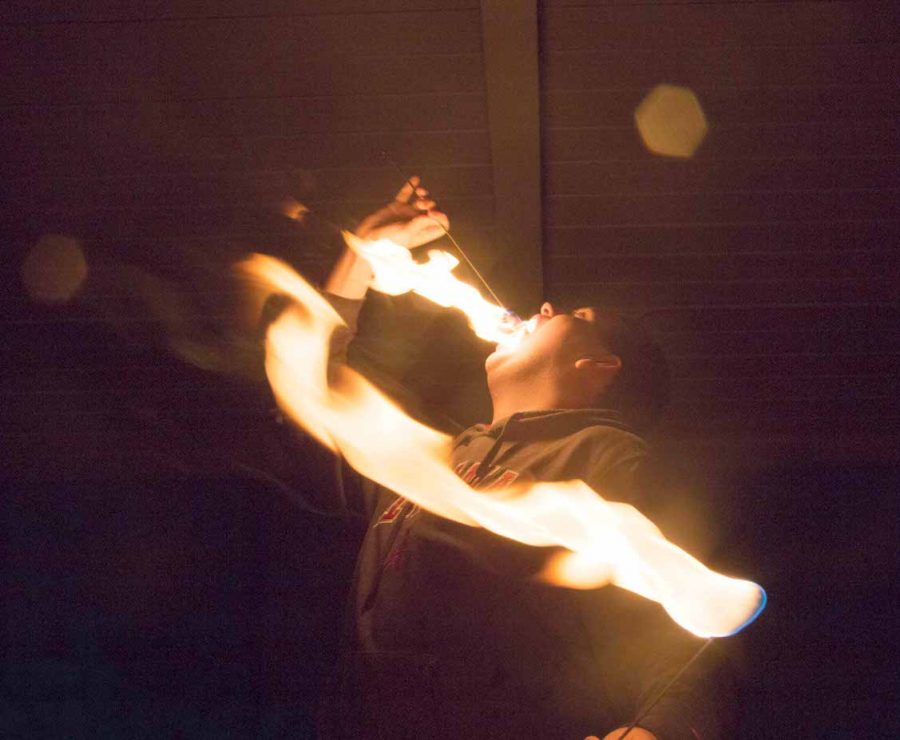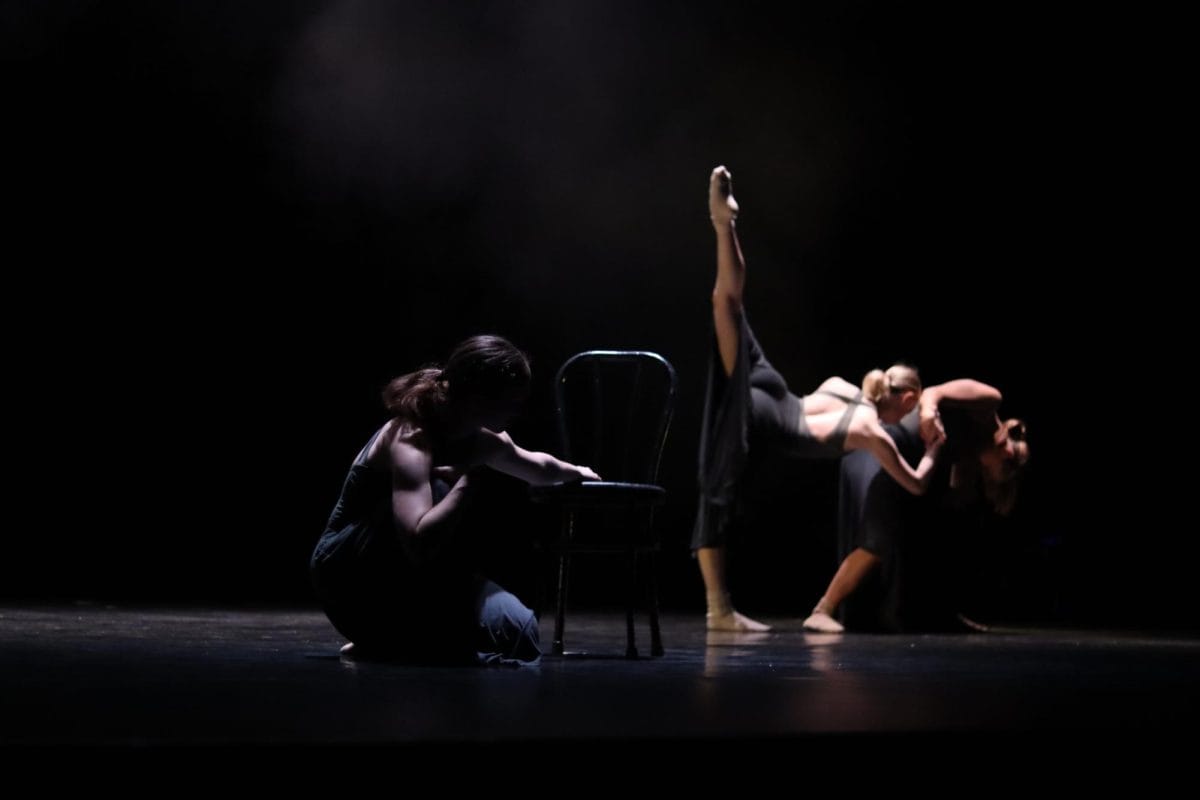By Reed O’Mara and Elayne Smith
For Sebastian Knight, running off to the circus takes no more than a short drive to his grandmother’s house on the outskirts of Northport.
“I’ve wanted to do fire breathing for years just for the fun of it,” Knight, a junior majoring in mechanical engineering, said. “I’ve messed with fire for years in a safe manner, but figured out as long as you don’t remain in contact with fire for more than two, three seconds, then it’s not going to burn you.”
Knight has been fire-eating and fire-breathing since January, when he discovered the hobby on YouTube. Fire-eating involves extinguishing flames in one’s mouth or doing tricks transferring flame, while fire-breathing is breathing out a flammable liquid over an open flame.
“There’s that natural instinct of, ‘Don’t stick a flaming object in your face, much less in your mouth,’ that you have to overcome,” Knight said. “It took me a little over a week to get over that.”
Zachary Pulley, a freshman majoring in mechanical engineering, experimented with fire-breathing during his senior year of high school because of an interest in its chemistry.
“I am a very big science nerd,” Pulley said. “You have to look at the chemistry of whatever material you’re using, to make sure it’s something that’s going to ignite correctly, but also something that will not cause you harm to have it in your mouth.”
(See also “UA chemistry professor receives $1 million grant“)
Pulley experimented with cornstarch, as well as with different kinds of alcohol, including rubbing and drinking alcohol. He said the key to fire-breathing is to keep the right amount of flammable liquid in his mouth so that when he exhales the fuel, particles spread out far enough to ignite each other without injuring the fire-breather.
Both Pulley and Knight said they’ve been burned by their hobby in the past, but that it is safe if performed correctly. Knight said he’s had his eyelashes singed off before and received a few first-degree burns.
“It’s not that complicated, but don’t be stupid,” Knight said. “If you make sure you’re not doing it in an unsafe environment, a place with winds or heavy foot traffic, then there shouldn’t be any issues, because the fluids are in a container, the fire rod has a limited amount of fuel on it, the igniter is typically far away from the fuel source, so everything you want to do is within your control.”
(See also “Performing for campus“)
Despite some dangers in fire-breathing or fire-eating, Knight said its allure outweighs its drawbacks. He said he’s been around fire since his youth; living in the country, he burned leaves and trash from an early age. He said he was never conditioned to avoid fire.
“I enjoy fire,” Knight said. “I would say [it’s] exciting, but the normal fire, watching it die down, has a calming effect on me. It’s like watching the birth and death of a creation. You forged it up, and you watch it die down.”
When it comes to tasting fire, Knight and Pulley have contrasting views. Knight described it as spicy, with a feel like drinking warm water, and Pulley said it was ashy and tasted like carbon. The two fire-breathers use different fuel; Knight breathes paraffin oil and Pulley alcohol. Pulley focused on alcohol because it burns cooler and creates a blue flame.
Pulley, who secretly perfected fire-breathing while his parents were at work, stopped fire-breathing after uncovering the science behind it. Yet he said he still sees it as an alluring hobby which makes the performer feel powerful.
“You feel like a dragon,” Pulley said. “It feels cool when you do it correctly.”
(See also “Students dedicate November to novel writing“)







